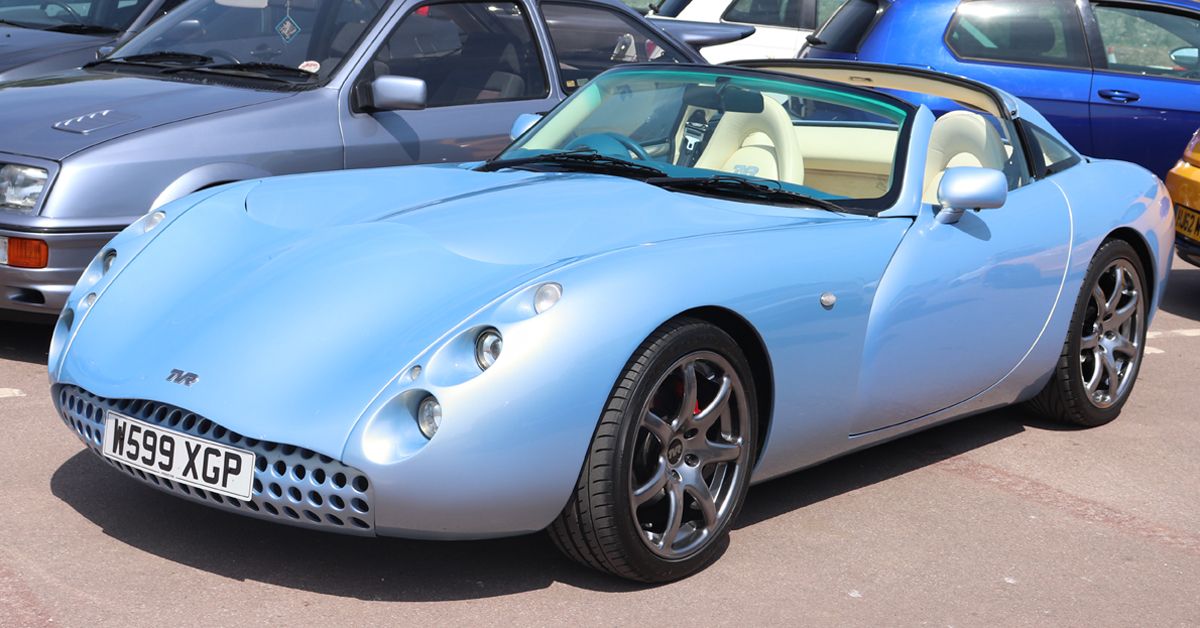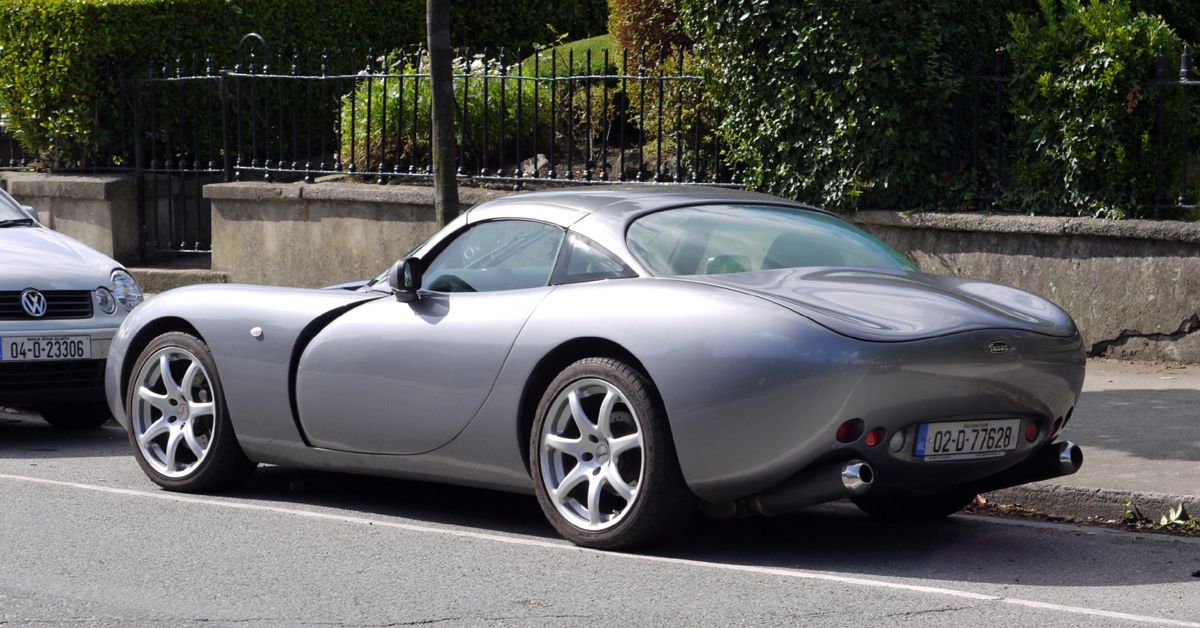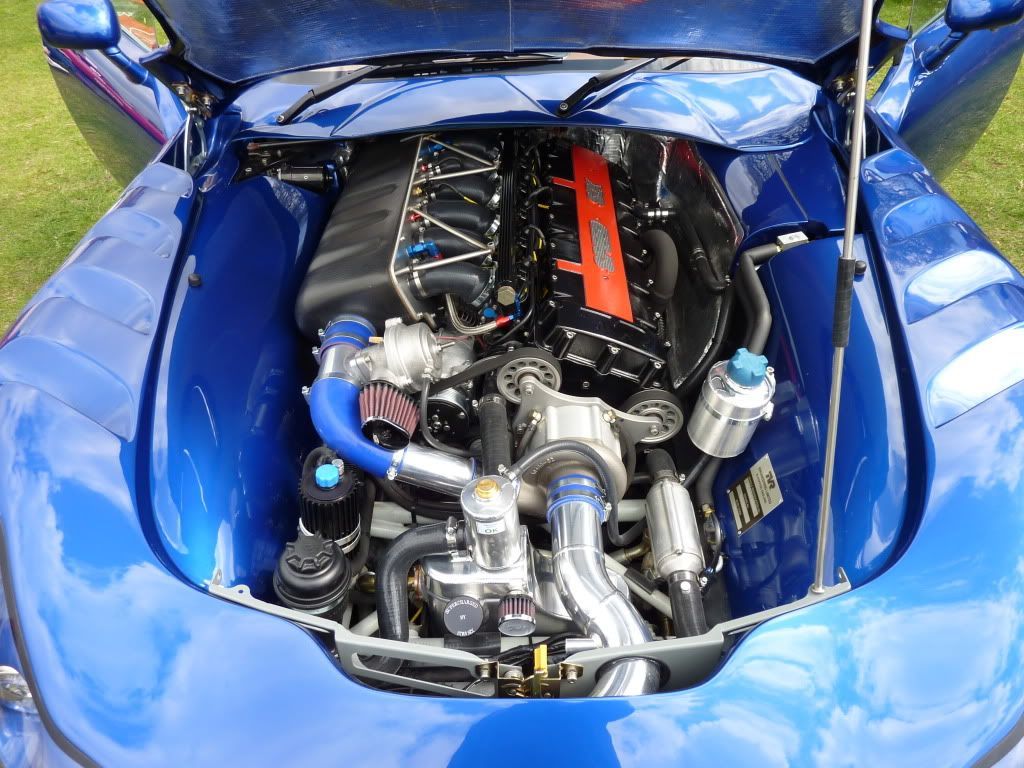TVR has been back for a little while now with the new Griffith, a car marketed as a purebred British racing car and eventual icon. With rear-wheel drive, a manual gearbox, and a V8 engine straight from the legends at Cosworth, it's sure to soothe any petrol head's ears.
The new Griffith maintains the same formula as the TVRs of old, which exited production back in 2006. The Blackpool-based manufacturer had a rather large lineup for such a small manufacturer. For 2006 they produced the Tamora, T350, Typhon, Sagaris, Cerbera, and the Tuscan. With minimal safety features, outlandish designs and engines with large displacements, these cars are Britain's answer to the muscle car.
The Tuscan was the sweet spot in the range with it being considerably larger than the T350R but with more agility and outlandish look than the Cerbera. In production from 1996 until 2006, the Tuscan's full title is the TVR Tuscan Speed Six, a nod to the old TVR Tuscan from the 1960s which it takes its design cues from, albeit with a more detailed design.
The TVR Tuscan is the sweet spot of the TVR range, balancing looks and power.
The TVR Tuscan Looks Like Nothing Else
In 2019, Evo magazine returned to the TVR Tuscan, describing it as "impossibly curvy" and "the definitive modern-era TVR". It may not be as mad as the TVR Cerbera Speed 12, a V12 equipped GT1 class racer to rival the likes of the McLaren F1.
However with TVR's upwards of 360 hp in-line six engines known as the Speed Six, and an obnoxious dual exhaust set up from a performance standpoint, it was all that a TVR needed to achieve 60 mph in 4.4 seconds for the 3.6-liter car and 3.7 seconds for the 4.0-liter car, according to the TVR Car Club.
The company is broken up into different eras, each is rather unique under the founder Trevor Wilkinson the company made kit cars. Lilley racing classics to rival Colin Chapman at Lotus and under Wheeler, the cars became iconic wedges before in the 1990s being revived and developing the curves, which would dominate the design language of the cars until the company filed for bankruptcy. The Tuscan is the culmination of this move towards curvaceous design as not a single straight line exists on the exterior of the car. At launch in 1999, nothing on the road had this same design aesthetic.
In a peculiar way, the closest thing on the road to the Tuscan's level of curves is the Mark 1 Audi TT, but where this generates a cute looking aesthetic, the Tuscan employs a long bulging bonnet to look shark-like.
A brief look through the used market for the car reinforces this further there are plenty of cars in various silvers and greys, as well as blue and red. However, the more mundane colors are brought to life with the use of pearlescent paint which makes the car look to be different colours in different lights, a distinctive feature of these late TVR models.
Lighter Than A Hatchback
The 360 horsepower figure doesn't sound particularly exciting when the new Golf R makes a little over 300 hp, but it is claimed by Carfolio that the Tuscan weighs in at 2,425 lbs. For perspective, the Volkswagen Up! weighs almost 2,050 lbs, according to Car Wow. A Fiat 500 Abarth is heavier at a little under 2,520 lbs, and those can genuinely be quite quick, this sort of power to weight ratio is impressive, dangerous and a little crazy.
These weight savings were achieved by cutting corners that simply wouldn't happen these days. Things like traction control and airbags went out the window. In the early 2000s, the TVR brand was criticized in national newspapers as being unsafe because they shunned these modern safety features. In 2004, Peter Wheeler spoke with Piston Heads and explained the reasons behind their philosophy, he is quoted as saying “The only purpose of ABS is to allow steering in wet conditions".
Piston Heads speak to his beliefs regarding airbags, "The latest range of TVRs are built with either full roll cages or in the case of the open top cars, a windscreen surround that is an integral part of the chassis and provides roll over protection". Wheeler believes these technologies to be unnecessary.
The same against the grain attitudes carry through into the interior. Bright leather. Peculiar shapes. The occasional exposed screw. Trade Classics described the Tuscan as an "Alien's Car", and they're right; it's unique and unlike its contemporaries or sports cars from today.
The TVR Tuscan Came With A Smaller Engine
However, unlike older TVRs this isn't a completely analogue experience as the Tuscan comes with power steering, an aid for long drives and low-speed manoeuvres increasing the usability of the car.
Evo wrote that "the Tuscan turns in so sharply" as well as retaining the "weighty" feel of the brand's previous models. But it isn't the pinnacle of everything TVR. With such a small development budget, the manufacturer couldn't afford to develop their own engines for a long time, which led to taking engines from the likes of Ford and Rover. In the circles of TVR owners, the power of The Rover V8 engine is missed.
The replacement to this engine was the TVR Speed 8 but this didn't make its way to the Tuscan road car instead it powered the Tuscan track car and the Cerbera. With a powerful enough engine, low curb weight, exhilarating driving dynamics and looks that are out of this world the Tuscan is an excellent sports car from the early noughties.


_-_9576421929.jpg)

